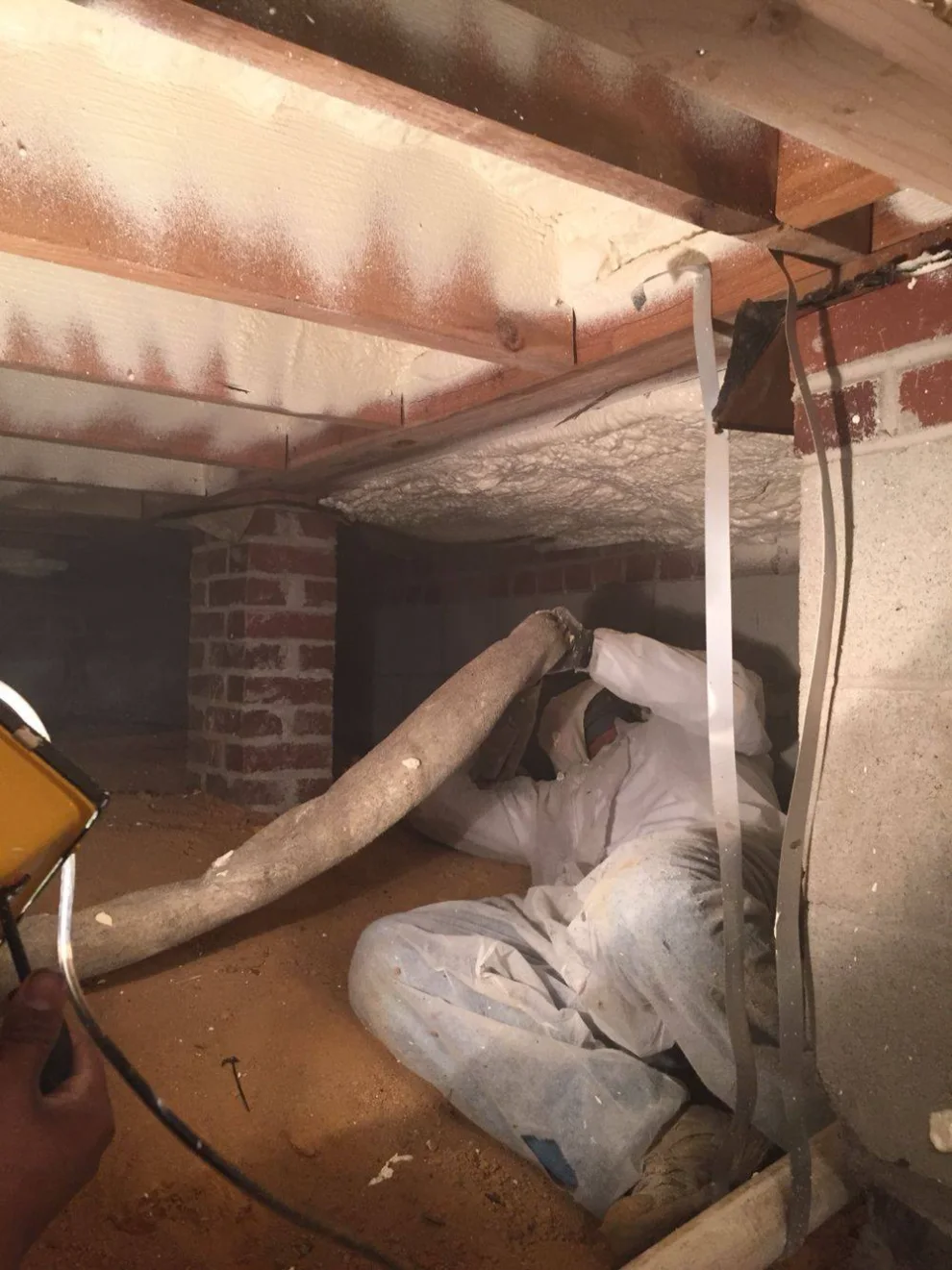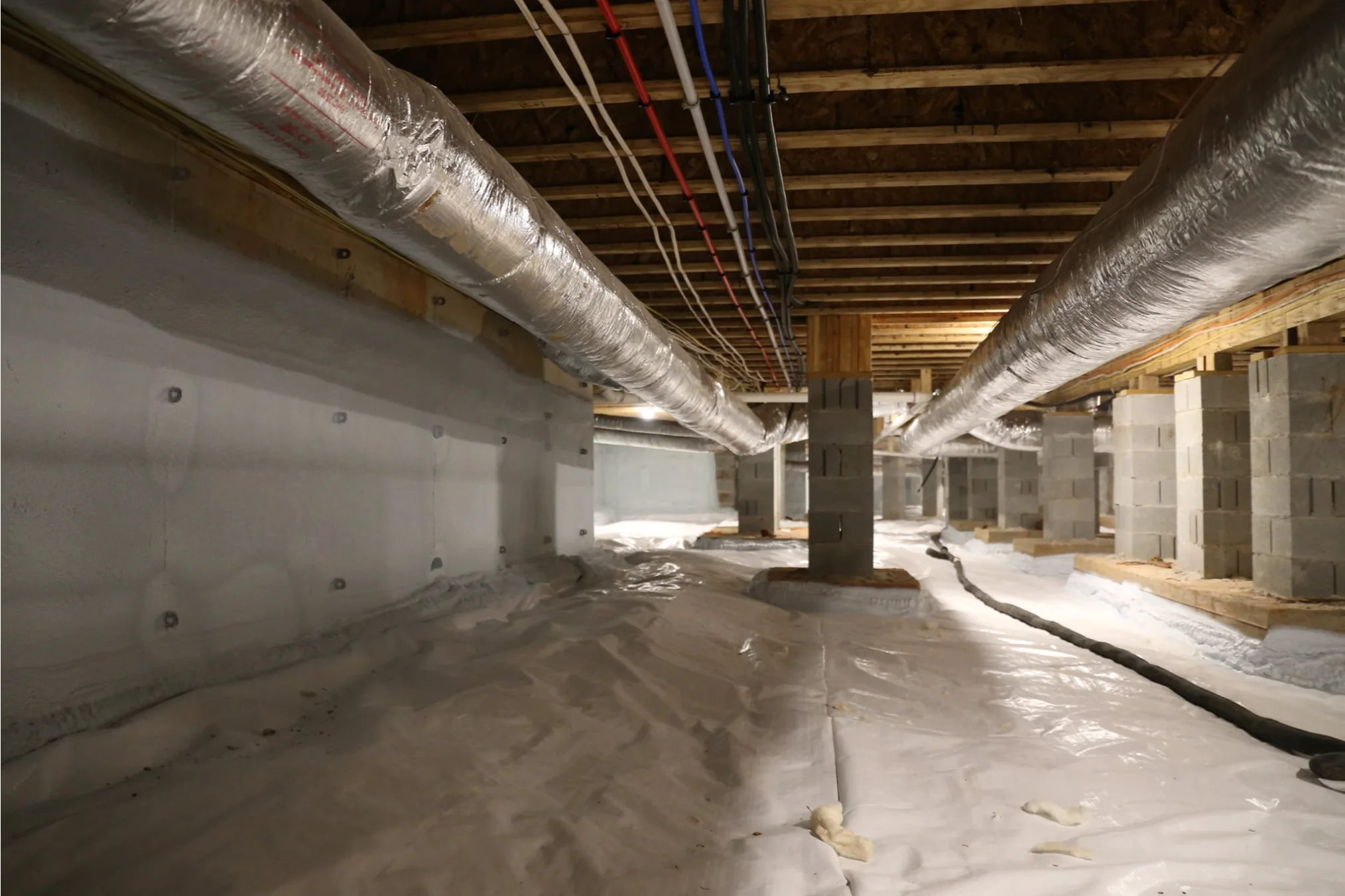
Spray foam insulation can help reduce mold risk in crawl spaces by limiting moisture buildup. The closed-cell variant, in particular, creates a moisture barrier that restricts water vapor from penetrating, thereby cutting off one of mold’s primary growth sources. This barrier minimizes humid air intrusion from the outside and limits internal condensation.
For mold prevention, insulation alone is not a complete solution. Spray foam improves resistance to mold but does not eliminate all potential risks. Mold can still grow if plumbing leaks, groundwater seepage, or existing biological contaminants go untreated. Spray foam should be part of a larger crawl space moisture management plan.
Ozark Eco Foam has applied spray foam in residential and agricultural crawl spaces across Kansas where high humidity, seasonal temperature swings, and poor ventilation contribute to mold issues. First-hand application results confirm a measurable drop in condensation levels and relative humidity within sealed crawl spaces post-installation.
Closed-cell spray foam offers higher moisture resistance than open-cell foam. It serves as a vapor barrier, which is important in crawl spaces with ground-level moisture. Open-cell foam, while still insulating, is more permeable and may not block humidity as effectively in high-moisture zones.
| Foam Type | Vapor Permeability | Water Resistance | Typical Use in Crawl Spaces |
|---|---|---|---|
| Closed Cell Foam | Low | High | Best for moisture-prone areas |
| Open Cell Foam | High | Moderate | Suitable for drier crawl spaces |
Bonus Tip: Always address drainage and ventilation before insulation. Foam over a wet surface traps moisture.
Spray foam acts as an air barrier. By reducing air infiltration from the outside, it limits warm, moist air from contacting cooler surfaces, which would otherwise create condensation. This is critical in regions with humid summers and cold winters, like southeastern Kansas.
| Crawl Space Factor | Impact of Spray Foam Application |
|---|---|
| Air Infiltration | Significantly reduced |
| Humidity levels | Moderated due to reduced air exchange |
| Condensation on framing | Lowered due to thermal barrier |
Bonus Tip: Include rim joists in the spray foam scope. These are high-risk zones for cold air leaks and condensation.

Spray foam helps prevent mold in crawl spaces by reducing moisture sources through air sealing and vapor resistance. Closed-cell foam offers the best protection where humidity is high or ground moisture is a concern. Effective mold prevention requires surface prep, drainage solutions, and correct application techniques tailored to building conditions.
Ozark Eco Foam provides professional crawl space insulation, air sealing, and moisture management services. Reach out at (417) 572-5893 or email ozarkecofoam@gmail.com for support tailored to your crawl space conditions.
Spray foam should not be applied over mold. The affected areas must be cleaned and treated before installation.
Properly installed spray foam can last over 30 years without losing performance, provided it’s not exposed to continuous moisture or mechanical damage.
Yes. Incorrect application over damp surfaces or without proper sealing can trap moisture behind the foam, leading to mold.
In most closed-cell applications, a separate vapor barrier is not required. However, it may be added based on building code or specific environmental conditions.
In humid regions like southeastern Kansas, closed-cell foam is preferred due to higher moisture resistance.